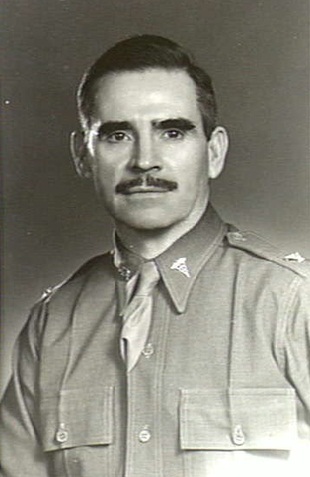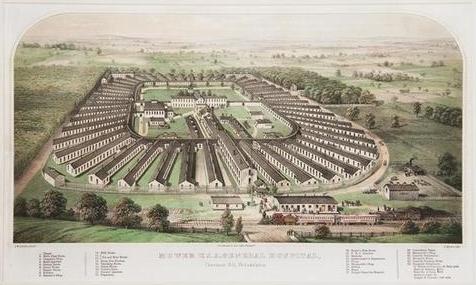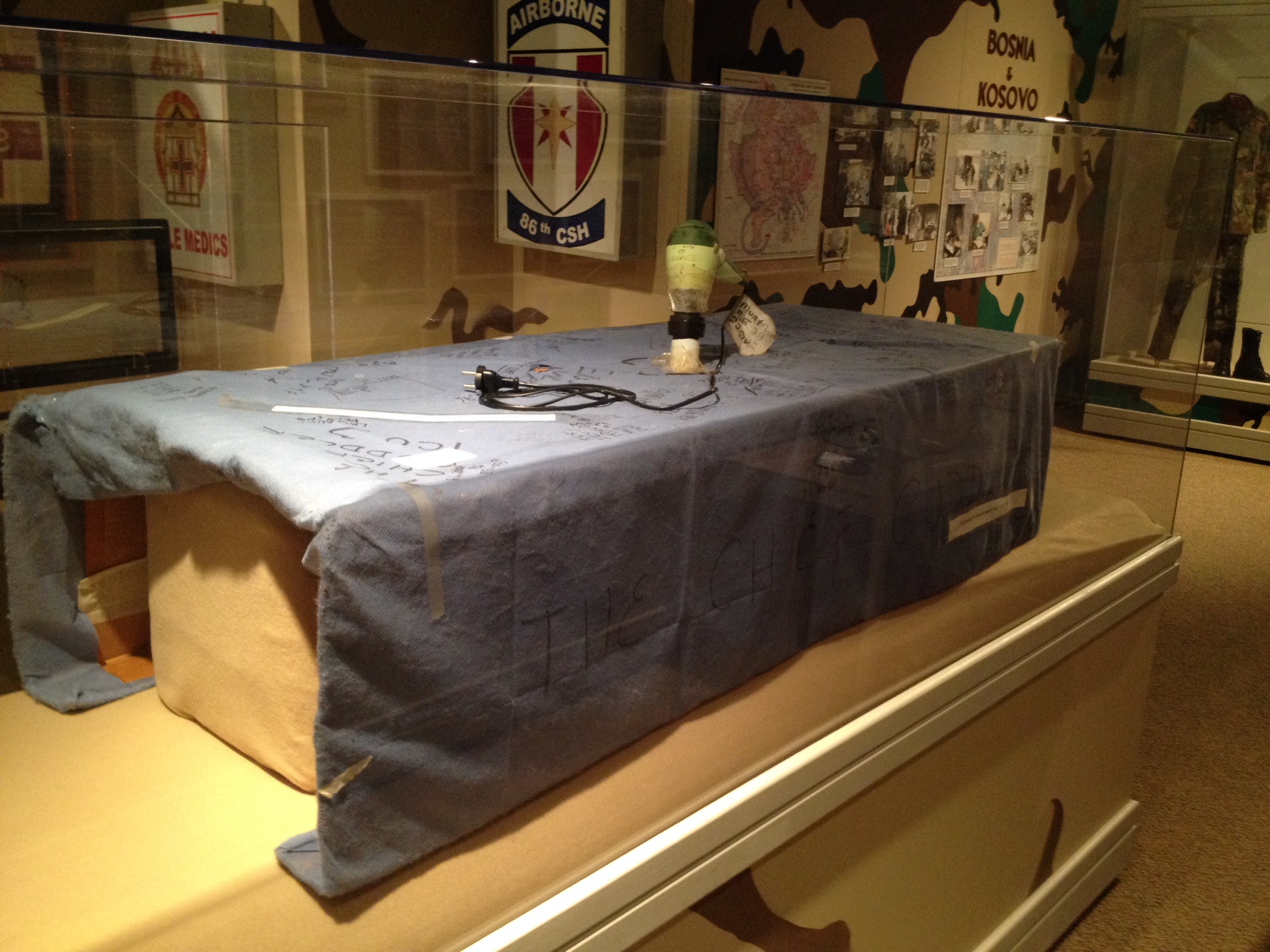|
Portable Surgical Hospital
During World War II, Portable Surgical Hospitals (PSH) were a type of field hospital within the United States Army. They were units of the United States Army Medical Department designed to be man-portable by the team staffing the hospital. Unique to the Pacific Theater of Operations, they were the operational forbearers of the larger, more robust Mobile Army Surgical Hospital (MASH units). History of the Portable Surgical Hospitals In February 1942, Colonel Percy J. Carroll, the Chief Surgeon of the US Army Forces, Southwest Pacific Area, found that he had problems integrating large 400 to 750-bed field and evacuation hospitals into troop flow as forces advanced because of the underdeveloped transportation infrastructure and terrain in the Southwest Pacific, particularly in Papua and New Guinea. This limited his ability to move hospitals closely forward behind advancing forces and support combat operations with effective, far-forward surgical care. During the summer and fall of ... [...More Info...] [...Related Items...] OR: [Wikipedia] [Google] [Baidu] |
World War II
World War II or the Second World War, often abbreviated as WWII or WW2, was a world war that lasted from 1939 to 1945. It involved the vast majority of the world's countries—including all of the great powers—forming two opposing military alliances: the Allies and the Axis powers. World War II was a total war that directly involved more than 100 million personnel from more than 30 countries. The major participants in the war threw their entire economic, industrial, and scientific capabilities behind the war effort, blurring the distinction between civilian and military resources. Aircraft played a major role in the conflict, enabling the strategic bombing of population centres and deploying the only two nuclear weapons ever used in war. World War II was by far the deadliest conflict in human history; it resulted in 70 to 85 million fatalities, mostly among civilians. Tens of millions died due to genocides (including the Holocaust), starvation, ma ... [...More Info...] [...Related Items...] OR: [Wikipedia] [Google] [Baidu] |
Regiment
A regiment is a military unit. Its role and size varies markedly, depending on the country, service and/or a specialisation. In Medieval Europe, the term "regiment" denoted any large body of front-line soldiers, recruited or conscripted in one geographical area, by a leader who was often also the feudal lord ''in capite'' of the soldiers. Lesser barons of knightly rank could be expected to muster or hire a company or battalion from their manorial estate. By the end of the 17th century, infantry regiments in most European armies were permanent units, with approximately 800 men and commanded by a colonel. Definitions During the modern era, the word "regiment" – much like "corps" – may have two somewhat divergent meanings, which refer to two distinct roles: # a front-line military formation; or # an administrative or ceremonial unit. In many armies, the first role has been assumed by independent battalions, battlegroups, task forces, brigades and other, similarly s ... [...More Info...] [...Related Items...] OR: [Wikipedia] [Google] [Baidu] |
Battalion Aid Stations
{{no footnotes, date=February 2013 In the United States Army and Marine Corps, a battalion aid station is a medical section within a battalion's support company. As such, it is the forwardmost medically staffed treatment location. During peacetime, it is led by a medical operations officer, a first lieutenant in the Army Medical Service Corps or a lieutenant from the Navy Medical Corps. During combat, a commissioned medical doctor with the Army Medical Corps may assume leadership of the platoon and direct medical operations. However, in the Army, the medical service officer normally retains control of training, planning, and administration of the platoon while the doctor in charge directs medical care. The primary mission of the battalion aid station is to collect the sick and wounded from the battalion and stabilize the patients' condition. The battalion aid station belongs to, and is an organic component of, the unit it supports. It may be split into two functional units f ... [...More Info...] [...Related Items...] OR: [Wikipedia] [Google] [Baidu] |
List Of Former United States Army Medical Units
The following is a list of former (inactivated or decommissioned) U.S. Army medical units – both fixed and deployable – with dates of inactivations, demobilizations, or redesignations. Named hospitals Civil War era ''Note: an asterisk (*) denotes a civilian hospital temporarily commandeered by the Union Army.'' *Baxter General Hospital, Burlington, Vermont (1865) * Brown General Hospital *Freedman's Hospital *Camp Letterman, an extensive field hospital used to treat the wounded after the Battle of Gettysburg, 1863 *McDougall Hospital, Westchester, New York (state) (1862). (The location is now within The Bronx, New York City). *Mower Hospital (1865) *Satterlee Hospital (1865) *Sloan General Hospital, Montpelier, Vermont (1865) *Smith General Hospital, Brattleboro, Vermont (1865) * Indianapolis City Hospital* *Yale – New Haven Hospital* (as the "Knight United States Army General Hospital") * York United States Army Hospital Spanish–American War World War I *Rockefel ... [...More Info...] [...Related Items...] OR: [Wikipedia] [Google] [Baidu] |
45th Portable Surgical Hospital
The 45th Surgical Hospital was a United States military hospital that saw service in the China-Burma-India theater in World War II, Korea, and Vietnam. Lineage Activated 7 June 1943 at Camp White, Oregon as the 45th Portable Surgical Hospital Inactivated 1945 Activated 1953 in Korea Inactivated 1954 Activated 1956 at Fort Sam Houston Texas Inactivated in the Republic of Vietnam, 10 December 1970 Honors Campaign participation credit * World War II # India-Burma # China Defensive # Central Burma # China Offensive * Korean War #Third Winter Campaign #Summer-Fall 1953 * Vietnam Decorations *Meritorious Unit Citation (Army) # #VIETNAM 1966-1969 Distinctive unit insignia Description A silver color metal and enamel device 1 1/4 inches (3.18 cm) in height overall consisting of a black Chinthe astride a silver cross issuing from a Taeguk between two maroon fleams. All in front and below a stylized palm branch with two oak leaves proper. Symbolism Maroon and white are the c ... [...More Info...] [...Related Items...] OR: [Wikipedia] [Google] [Baidu] |
28th Combat Support Hospital (United States)
The 28th Combat Support Hospital (28th CSH) was a Combat Support Hospital of the United States Army. It was first constituted in 1943 and served in China Burma India Theater of World War II, China during World War II. During the Gulf War in 1990, it was the first Army hospital unit established and deployed into Iraq with combat forces of the XVIII Airborne Corps (United States), XVIII Airborne Corps. More recently it has been involved in relief operations following natural disasters and has undertaken several recent deployments to Iraq War, Iraq. The unit fell under the command of the 44th Medical Brigade (United States), 44th Medical Brigade and was based at Fort Bragg (North Carolina), Fort Bragg, North Carolina. As part of an Army wide force restructuring, the 28th Combat Support Hospital was reorganized and redesignated as the 528th Field Hospital in April 2020. Its assets were also used to resource the 16th Hospital Center, the 437th Medical Detachment (Surgical), the 430th M ... [...More Info...] [...Related Items...] OR: [Wikipedia] [Google] [Baidu] |
Anesthesiologist
Anesthesiology, anaesthesiology, or anaesthesia is the medical specialty concerned with the total perioperative care of patients before, during and after surgery. It encompasses anesthesia, intensive care medicine, critical emergency medicine, and pain medicine. A physician specialized in anesthesiology is called an anesthesiologist, anaesthesiologist, or anaesthetist, depending on the country. In some countries, the terms are synonymous, while in other countries they refer to different positions, and ''anesthetist'' is only used for non-physicians, such as nurse anesthetists. The core element of the specialty is the study and use of anesthesia to safely support a patient's vital functions through the perioperative period. Since the 19th century, anesthesiology has developed from an experimental area with non-specialist practitioners using novel, untested drugs and techniques into what is now a highly refined, safe and effective field of medicine. In some countries anesthesiol ... [...More Info...] [...Related Items...] OR: [Wikipedia] [Google] [Baidu] |
Surgery
Surgery ''cheirourgikē'' (composed of χείρ, "hand", and ἔργον, "work"), via la, chirurgiae, meaning "hand work". is a medical specialty that uses operative manual and instrumental techniques on a person to investigate or treat a pathological condition such as a disease or injury, to help improve bodily function, appearance, or to repair unwanted ruptured areas. The act of performing surgery may be called a surgical procedure, operation, or simply "surgery". In this context, the verb "operate" means to perform surgery. The adjective surgical means pertaining to surgery; e.g. surgical instruments or surgical nurse. The person or subject on which the surgery is performed can be a person or an animal. A surgeon is a person who practices surgery and a surgeon's assistant is a person who practices surgical assistance. A surgical team is made up of the surgeon, the surgeon's assistant, an anaesthetist, a circulating nurse and a surgical technologist. Surgery usually spa ... [...More Info...] [...Related Items...] OR: [Wikipedia] [Google] [Baidu] |
Battalion
A battalion is a military unit, typically consisting of 300 to 1,200 soldiers commanded by a lieutenant colonel, and subdivided into a number of companies (usually each commanded by a major or a captain). In some countries, battalions are exclusively infantry, while in others battalions are unit-level organizations. The word battalion came into the English language in the 16th century from the French language ( French: ''bataillon'' meaning "battle squadron"; Italian: ''battaglione'' meaning the same thing; derived from the Vulgar Latin word ''battalia'' meaning "battle" and from the Latin word ''bauttere'' meaning "to beat" or "to strike"). The first use of the word in English was in the 1580s. Description A battalion comprises two or more primary mission companies which are often of a common type (e.g., infantry, tank, or maintenance), although there are exceptions such as combined arms battalions in the U.S. Army. In addition to the primary mission companies, a battal ... [...More Info...] [...Related Items...] OR: [Wikipedia] [Google] [Baidu] |
Field Hospital
A field hospital is a temporary hospital or mobile medical unit that takes care of casualties on-site before they can be safely transported to more permanent facilities. This term was initially used in military medicine (such as the Mobile Army Surgical Hospital or MASH), but it has also been used to describe alternate care sites used in disasters and other emergency situations. A field hospital is a medical staff with a mobile medical kit and, often, a wide tent-like shelter (at times an inflatable structure in modern usage) so that it can be readily set up near the source of casualties. In an urban environment, the field hospital is often established in an easily accessible and highly visible building (such as restaurants, schools, hotels and so on). In the case of an airborne structure, the mobile medical kit is often placed in a normalized container; the container itself is then used as shelter. A field hospital is generally larger than a temporary aid station but sma ... [...More Info...] [...Related Items...] OR: [Wikipedia] [Google] [Baidu] |
Nurse
Nursing is a profession within the health care sector focused on the care of individuals, families, and communities so they may attain, maintain, or recover optimal health and quality of life. Nurses may be differentiated from other health care providers by their approach to patient care, training, and scope of practice. Nurses practice in many specialties with differing levels of prescription authority. Nurses comprise the largest component of most healthcare environments; but there is evidence of international shortages of qualified nurses. Many nurses provide care within the ordering scope of physicians, and this traditional role has shaped the public image of nurses as care providers. Nurse practitioners are nurses with a graduate degree in advanced practice nursing. They are however permitted by most jurisdictions to practice independently in a variety of settings. Since the postwar period, nurse education has undergone a process of diversification towards advanced an ... [...More Info...] [...Related Items...] OR: [Wikipedia] [Google] [Baidu] |





.jpg)
.jpg)